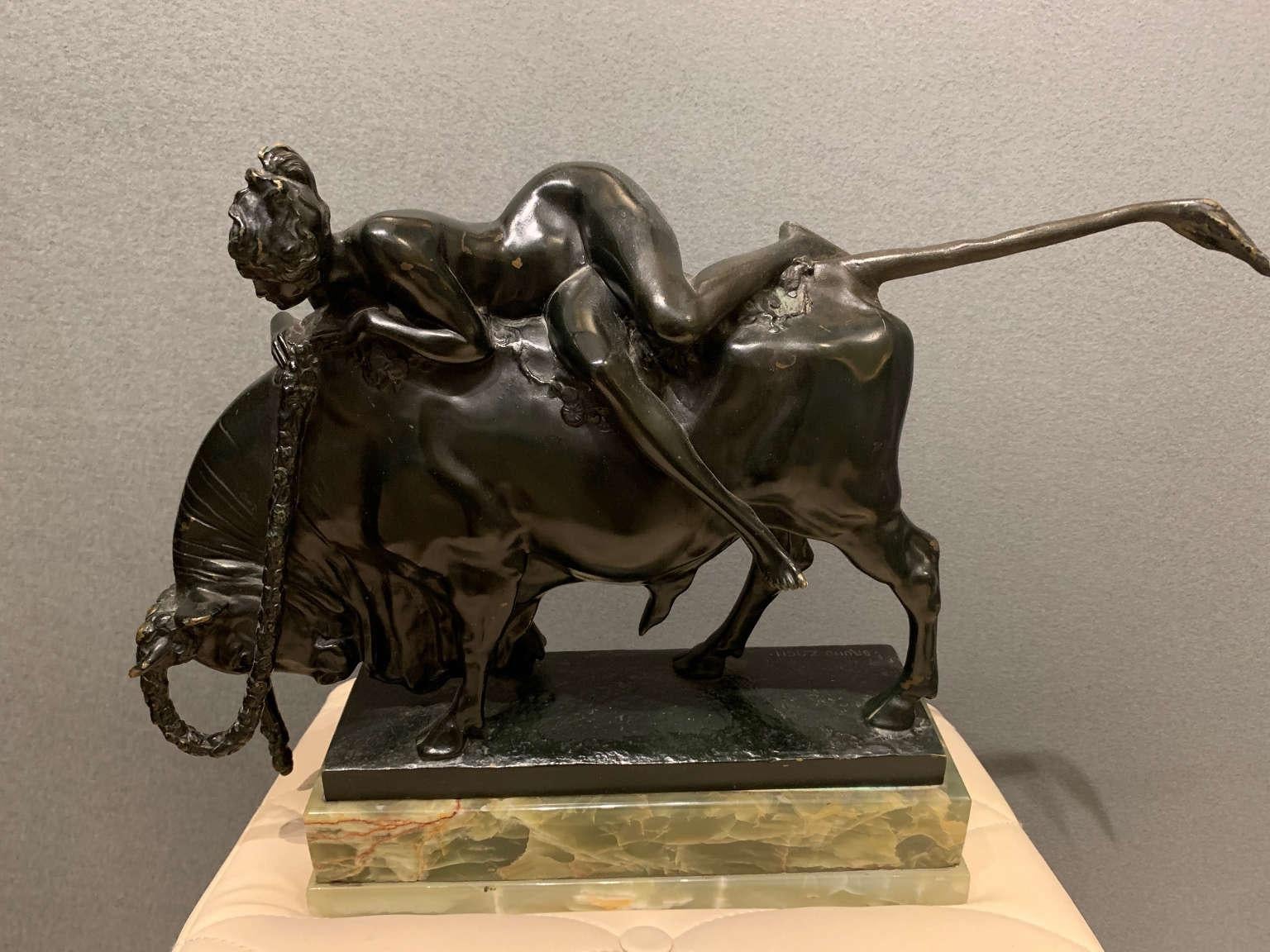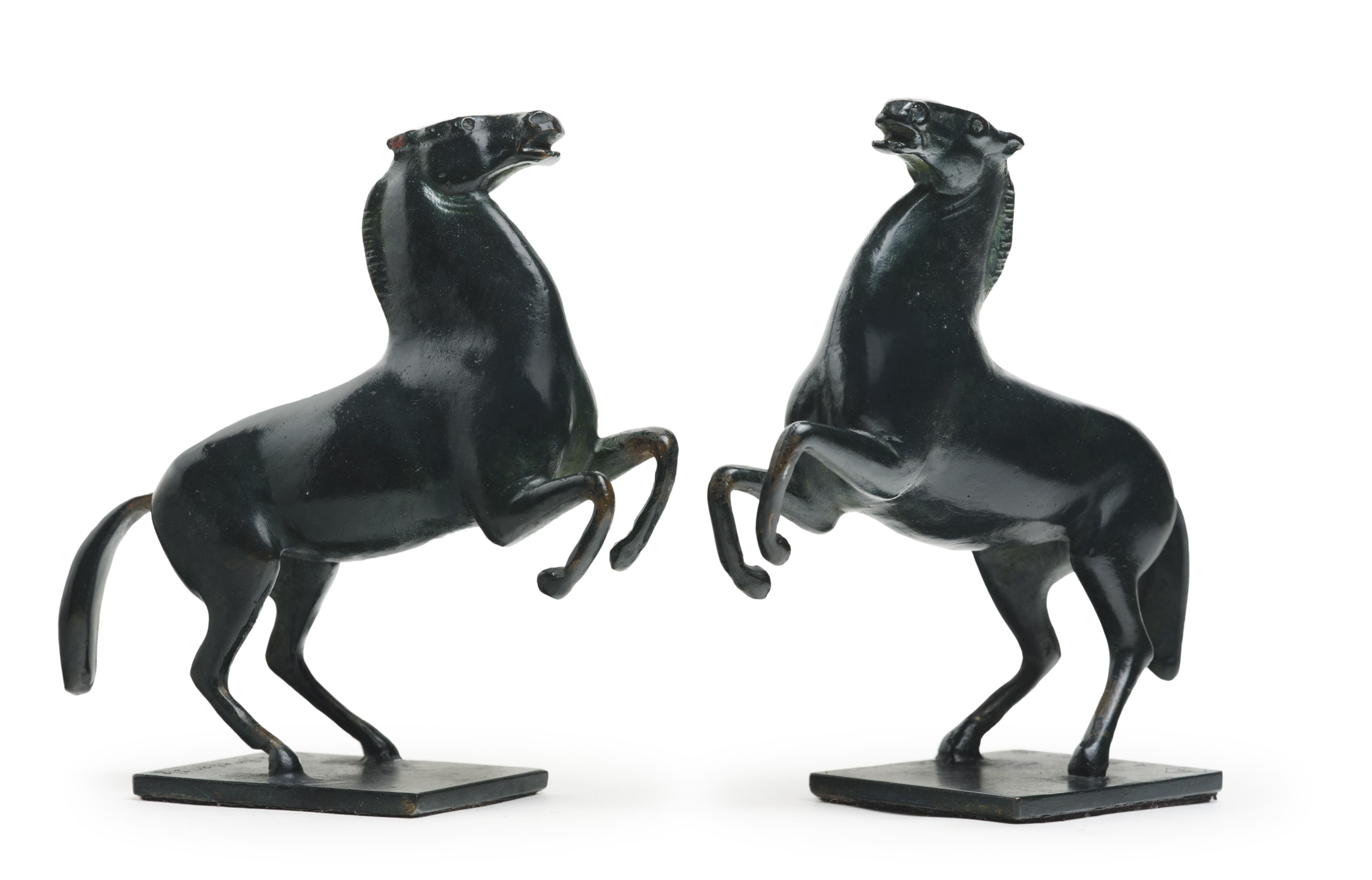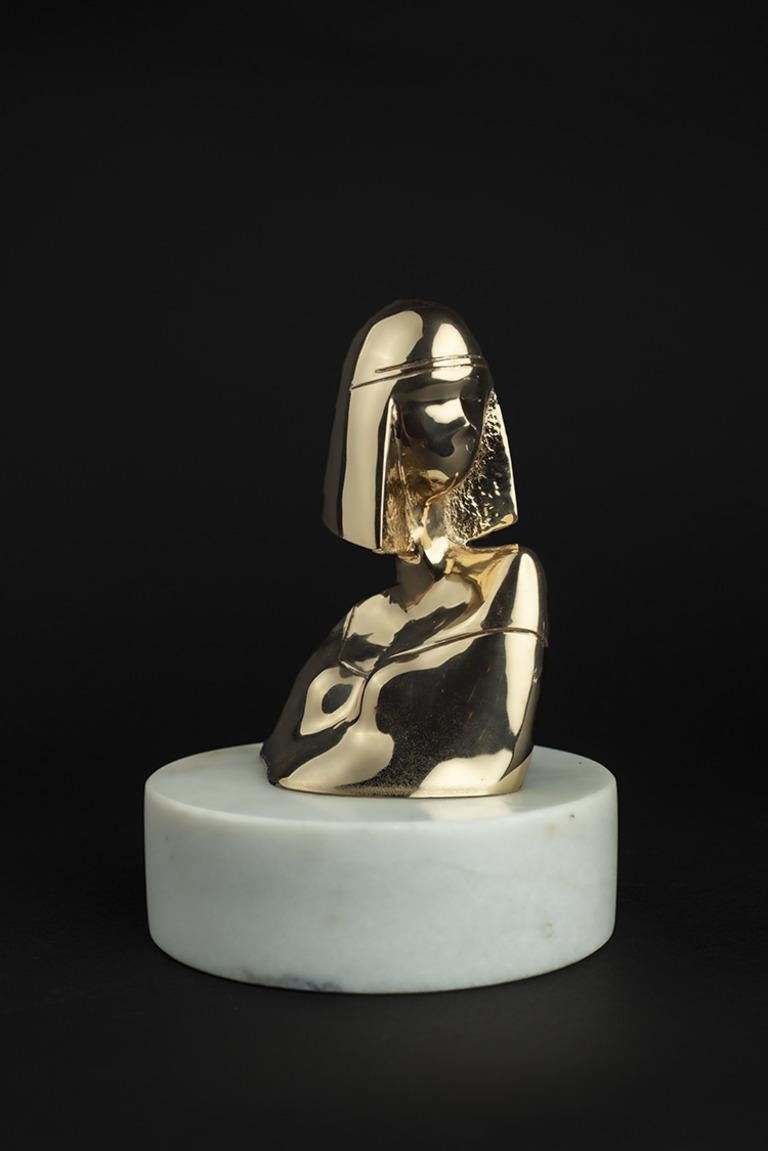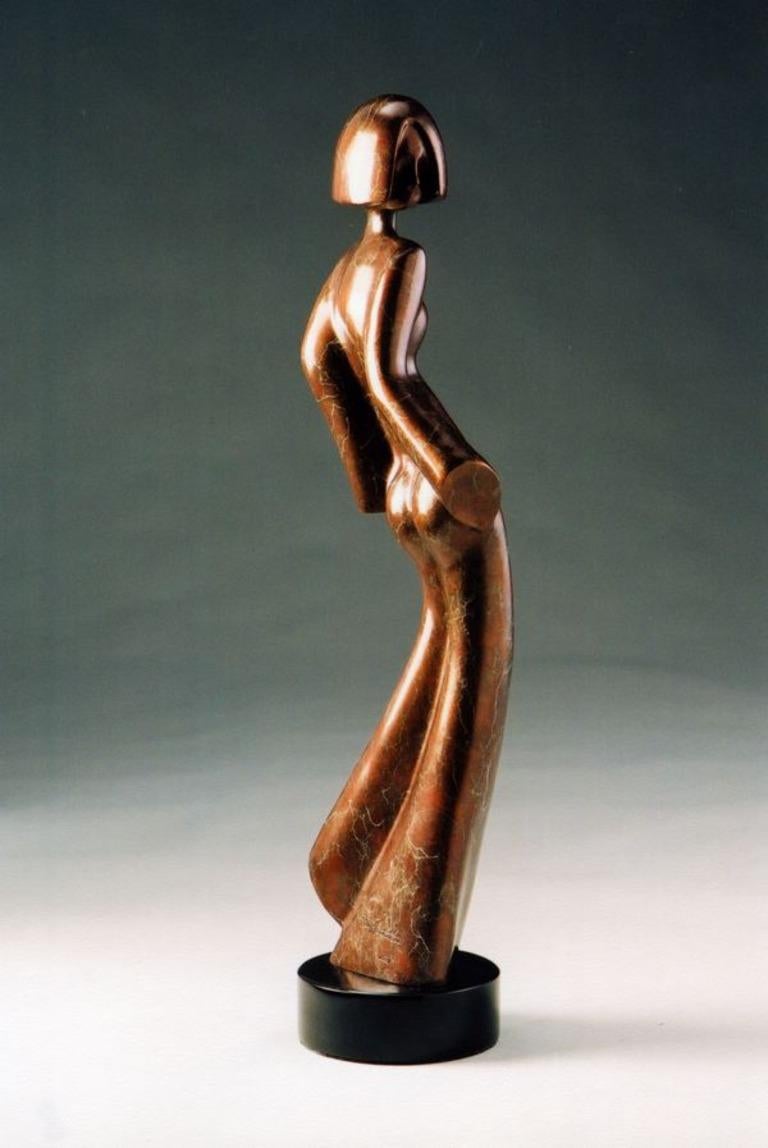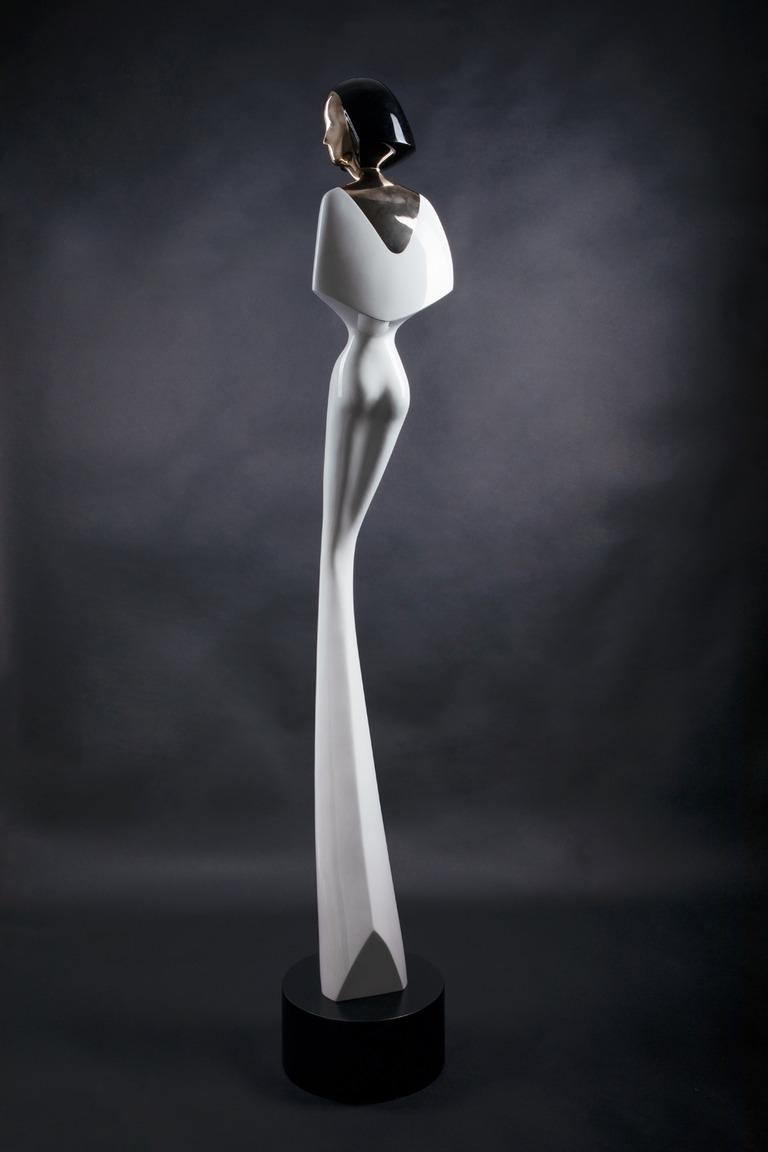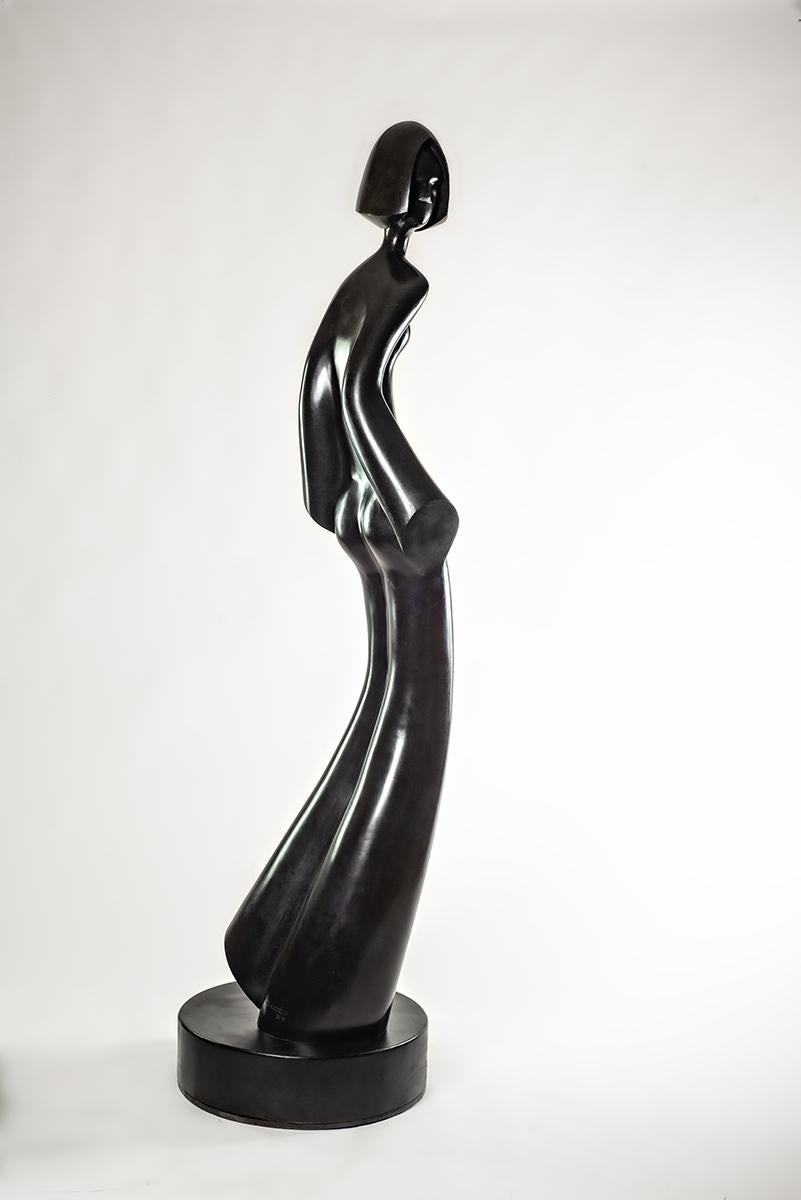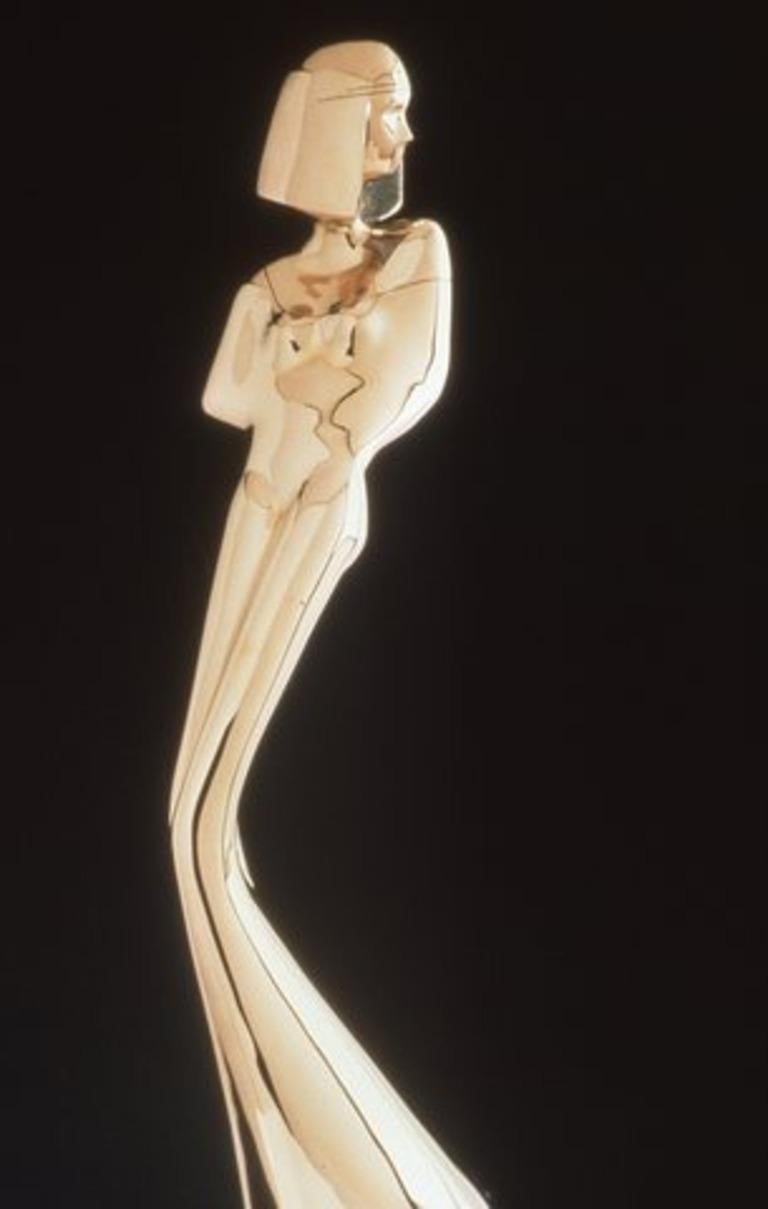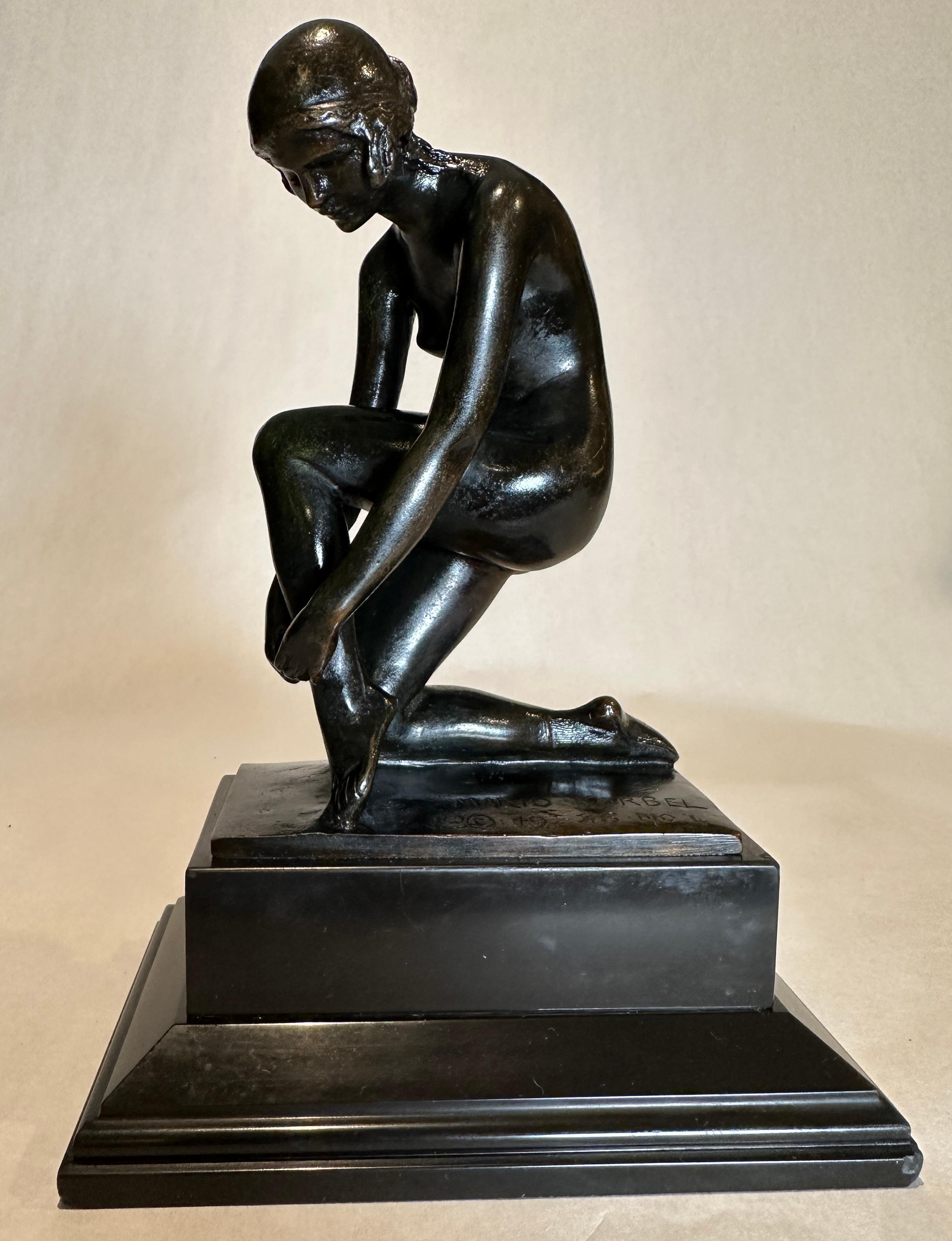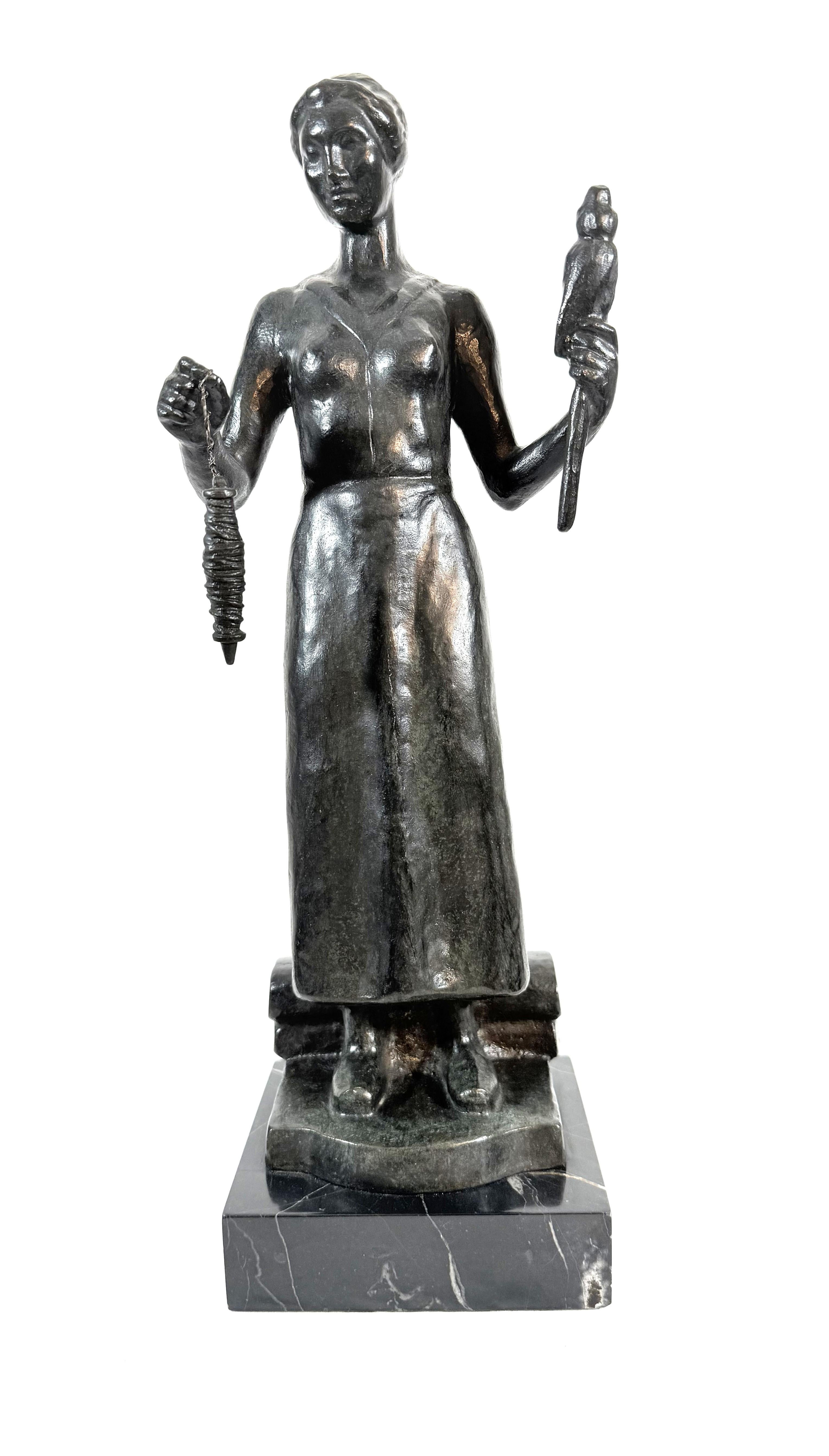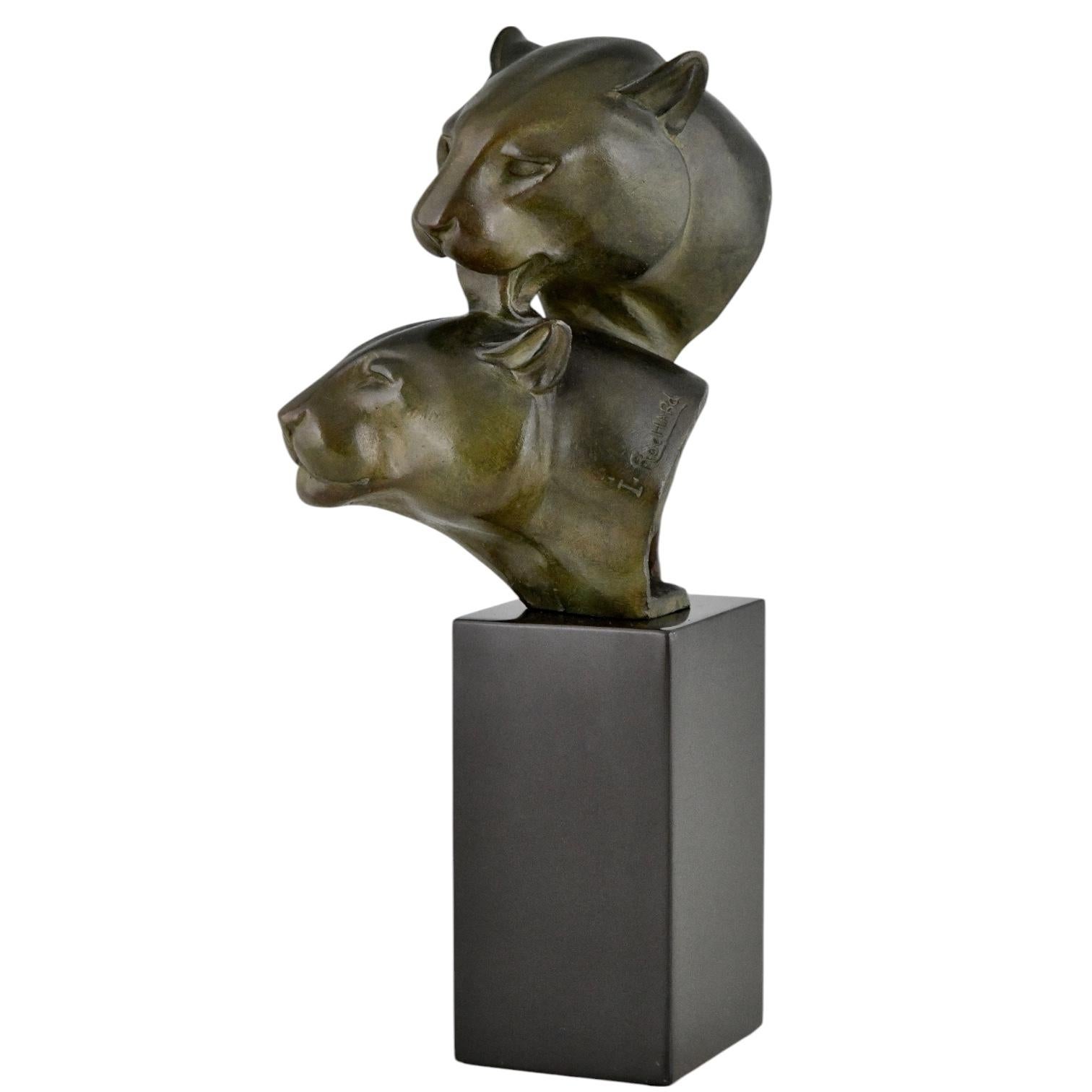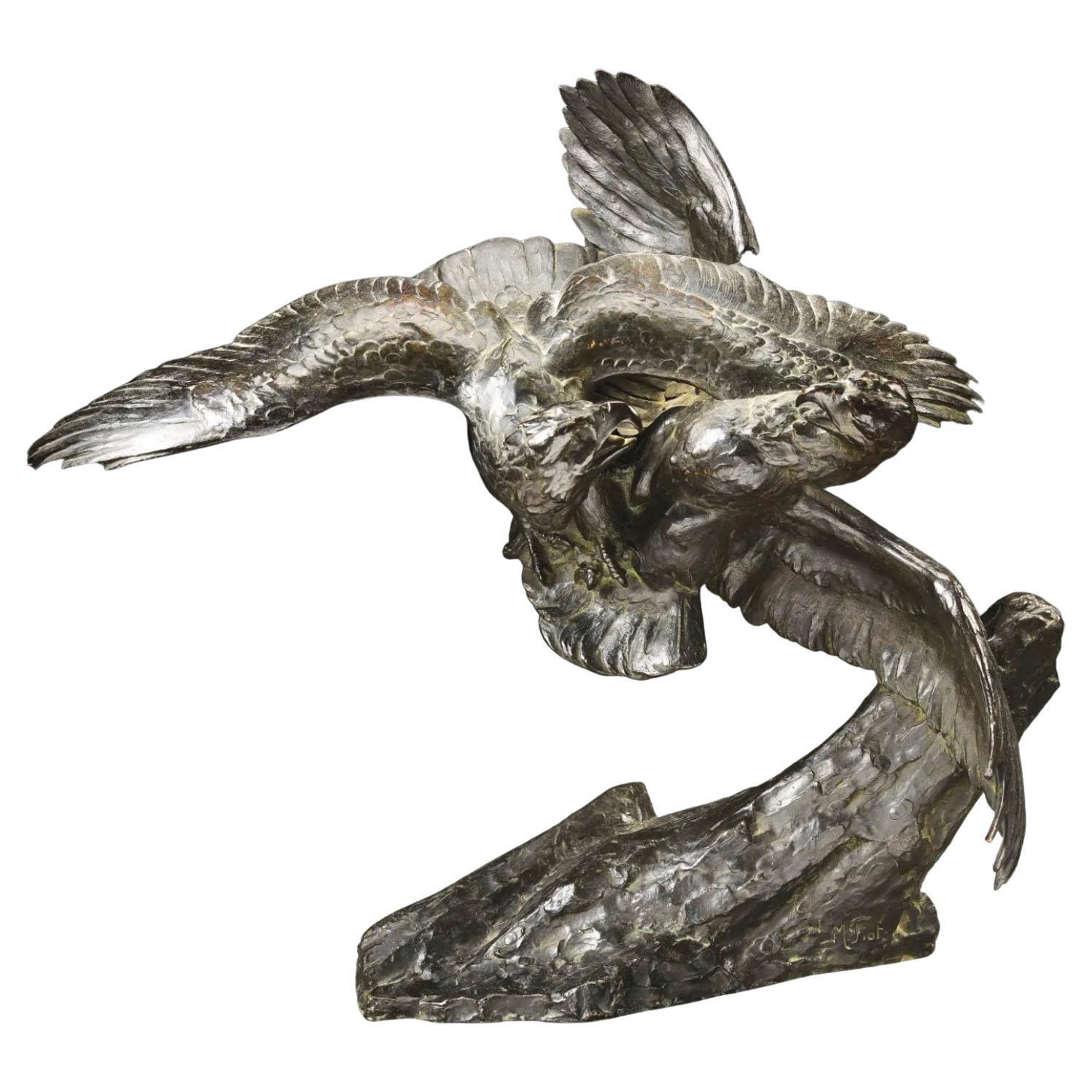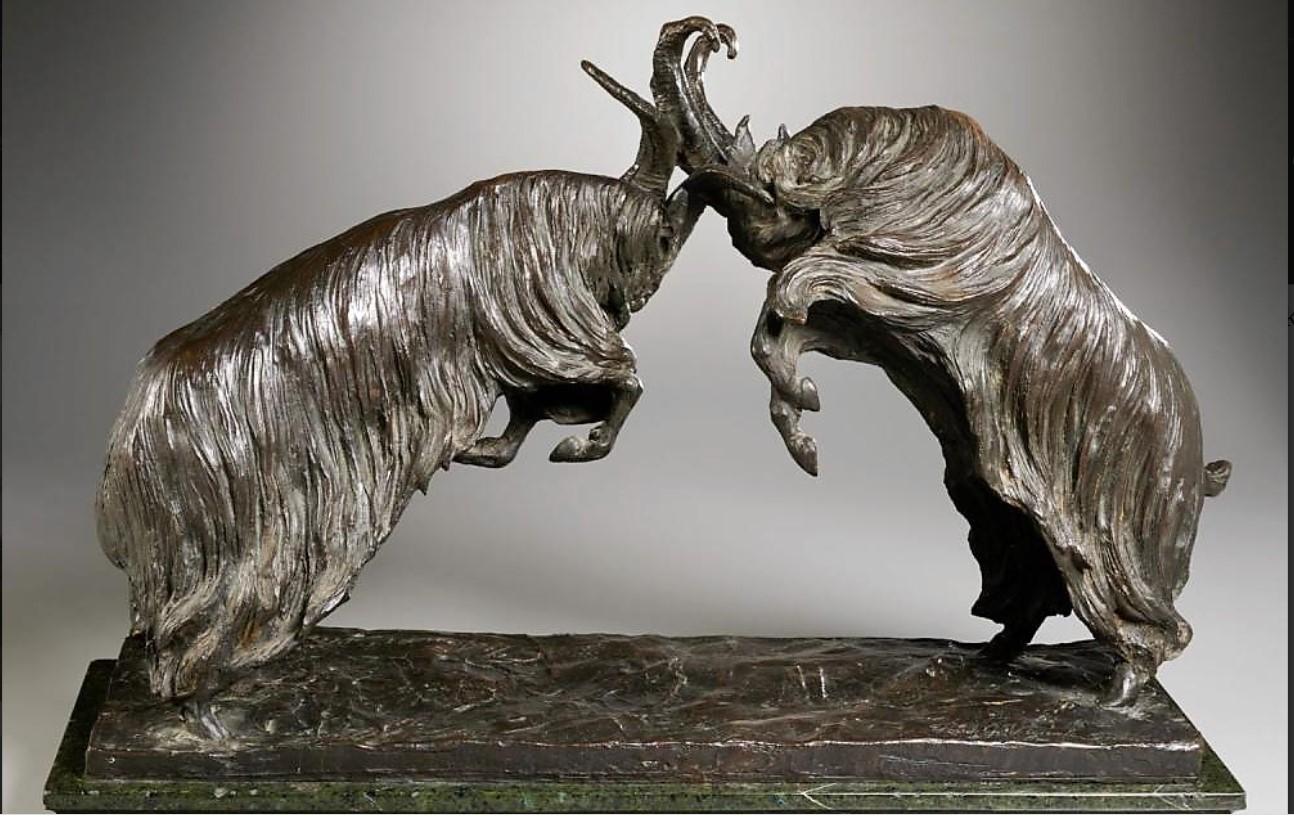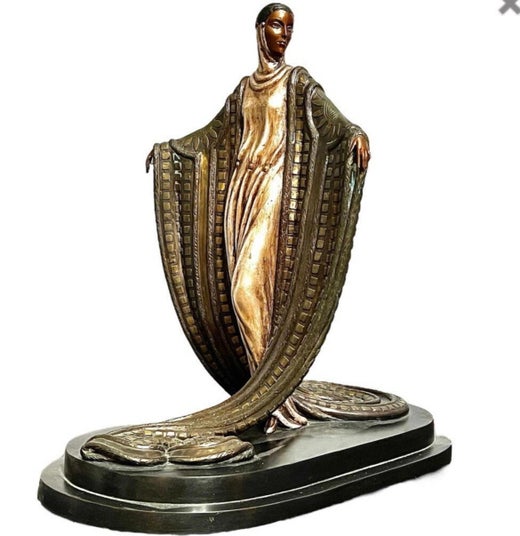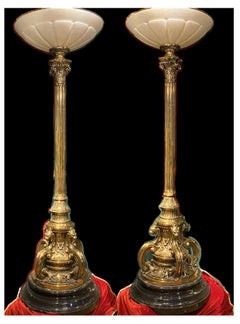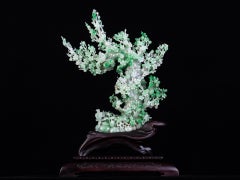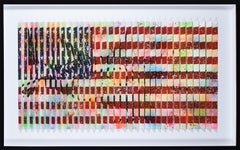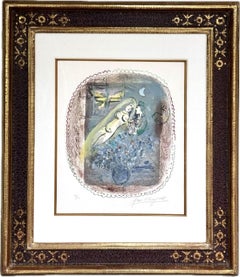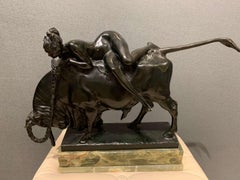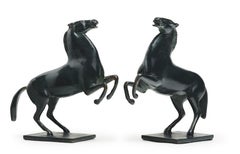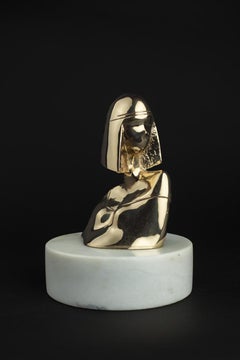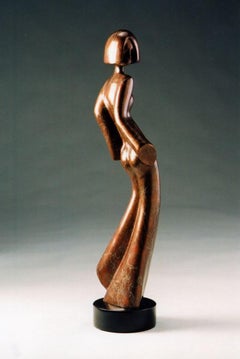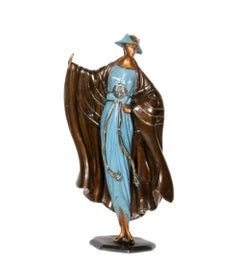
Erte " Rue dela Paix
View Similar Items
Want more images or videos?
Request additional images or videos from the seller
1 of 6
Erte - Romain de TirtoffErte " Rue dela Paix1987
1987
$3,950List Price
About the Item
- Creator:Erte - Romain de Tirtoff (1892 - 1990, Russian)
- Creation Year:1987
- Dimensions:Height: 14.25 in (36.2 cm)Width: 7 in (17.78 cm)
- Medium:
- Movement & Style:
- Period:
- Condition:
- Gallery Location:Los Angeles, CA
- Reference Number:1stDibs: LU1436213888502
Erte - Romain de Tirtoff
Erté, Romain de Tirtoff, (1892–1990) was a Russian-born French artist and designer who is equally famous for his elegant fashion designs and his artwork, both of which capture the art deco period in which he worked. Diversely talented, Erté was born in Saint Petersburg to a distinguished family with roots tracing back to 1548. After moving to Paris, he secured his first substantial contract with Harper's Bazaar magazine, and thus launched an illustrious career that included designing costumes and stage sets. Between 1915–1937, Erte designed over 200 covers for Harper's Bazaar, and his illustrations would also appear in such publications as Illustrated London News, Cosmopolitan, Ladies' Home Journal, and Vogue. Erté flourished and was renowned in an array of fields, including fashion, jewelry, graphic arts, costume and set design for film, theater, and opera, and interior decor.
After designing apparel for the French dancer Gaby Deslys, Erté went on to design costumes, program designs, and sets which were featured in the Ziegfeld Follies of 1923, many productions of the Folies Bergère, and George White's Scandals. On Broadway, the celebrated French chanteuse Irène Bordoni wore Erté's designs. His delicate figures and sophisticated, glamorous designs are instantly recognizable, and his ideas and art still influence fashion into the 21st century.
About the Seller
5.0
Vetted Professional Seller
Every seller passes strict standards for authenticity and reliability
Established in 1988
1stDibs seller since 2020
17 sales on 1stDibs
Authenticity Guarantee
In the unlikely event there’s an issue with an item’s authenticity, contact us within 1 year for a full refund. DetailsMoney-Back Guarantee
If your item is not as described, is damaged in transit, or does not arrive, contact us within 7 days for a full refund. Details24-Hour Cancellation
You have a 24-hour grace period in which to reconsider your purchase, with no questions asked.Vetted Professional Sellers
Our world-class sellers must adhere to strict standards for service and quality, maintaining the integrity of our listings.Price-Match Guarantee
If you find that a seller listed the same item for a lower price elsewhere, we’ll match it.Trusted Global Delivery
Our best-in-class carrier network provides specialized shipping options worldwide, including custom delivery.More From This Seller
View AllEmpire Bronze Torchere Lamps
Located in Los Angeles, CA
A pair of gilded bronze torchere lamps with Alabaster shades on top and exquisite detailed bottom part supported by multi level round carved marble base.
Measurement: 91”height x 2...
Category
Late 19th Century Victorian More Art
Materials
Bronze
$115,000
Jadeite Jade Bonsai Tree with Birds Carving
Located in Los Angeles, CA
Item JD803
Jadeite Jade carved Bonsai Tree with Birds in natural translucent Green color. This intricately hand carved natural Jadeite jade is sitting on a custom made wood stand. ...
Category
Late 20th Century Other Art Style Still-life Sculptures
Materials
Precious Stone
ZAX "God Bless America"
Located in Los Angeles, CA
ZAX
2002
"God Bless America"
A Large 3-dimension one of a kind hand painted polymorph on paper,
E.M. Zax
Born and raised in Los Angeles, E.M. Zax is taking art to another dimensio...
Category
Early 2000s Pop Art Mixed Media
Materials
Mixed Media
Marc Chagall "Dédicace"
By Marc Chagall
Located in Los Angeles, CA
Marc Chagall (French/Russian, 1887-1985)
"Dédicace"
1968
Color lithograph
signed and numbered ##/50 in pencil
Image: 17 7/8 x 15 1/4 inches.
Framed: 38 x 34 1/4 x 2 1/4 inches.
...
Category
Mid-19th Century Surrealist Figurative Prints
Materials
Lithograph
Marc Chagall “Cantique de David Sorlier 272”
By Marc Chagall
Located in Los Angeles, CA
MARC CHAGALL (1887-1985)
1 Illustrationen aus “La Bible”, Probedrucke
“Cantique de David Sorlier 272”
1 Sheet of etching, 1931-1939,
Each c. 44-44, 5xc. 30, 5-33, 5 cm
Signature:...
Category
1930s Prints and Multiples
Materials
Etching
Ting Shao Kuang "Golden Age of India"
Located in Los Angeles, CA
Ting Shao Kuang (1939, Chengdu, China)
"Golden Age of India"
From the limited edition serigraph. Signed by the artist on the lower right cor...
Category
21st Century and Contemporary Figurative Prints
Materials
Screen
You May Also Like
Europa & Zeus
By Bruno Zach
Located in Wien, Wien
Europe & Zeus (divine love)
Europa the daughter of the Phoenician king of Tyre, Agenor and Zeus in love in the shape of the bull.
Bronze, on onyx pedestal
Signed: Bruno Zach
Category
1920s Art Deco Figurative Sculptures
Materials
Bronze
Pair of Prancing Horses, two bronzes signed and numbered by Arno Breker
Located in PARIS, FR
An official artist of the Nazi regime, trained in Montparnasse in the 1930s, Arno Breker continued to sculpt after the fall of the Third Reich, producing large-scale public commissions in Germany and portraits of prominent figures. The two small bronzes presented here, dated around 1978, are part of a long tradition of prancing horses dating back to antiquity. The asymmetrical treatment of the two front legs and the inclination of the head make these two copies of the same artwork a highly decorative pair.
1. Arno Breker, a prolific sculptor, from the Bohemia of Montparnasse to the commissions from the Third Reich ... and from the Federal Republic of Germany
The son of a stone carver, Arno Breker studied fine art and anatomy in his native Elberfeld. At the age of 20, he entered the Düsseldorf Academy of Art. He moved to Paris in 1926, where he continued his training in the studio of Maillol, who dubbed him "the German Michelangelo of the twentieth century". He shared a studio with Alexandre Calder and frequented Jean Cocteau, Foujita, Brancusi, Pablo Picasso and other artists of the bohemian Paris of the time. It was also in Paris in 1933 that he met Demetra Messala, the daughter of a Greek diplomat who posed for Maillol and Picasso, whom he married in 1937. Having won the Prussian Prix de Rome in 1932, he left Paris to stay at the Villa Massimo, the German Academy in Rome.
Returning to Germany in 1934, his style evolved towards a more marked imitation of ancient sculpture. He created two monumental statues for Berlin's Olympic Stadium, before being appointed professor at the Berlin College of Fine Arts in 1937. He came to the attention of the Reich Propaganda Ministry, which awarded him several commissions and provided him with three large studios in which Breker produced many monumental sculptures to the glory of the regime. On June 23, 1940, Breker accompanied Adolf Hitler during a visit to Paris. During the Occupation, his political connections enabled him to intervene on behalf of many artists pursued by the Nazis: for example, he protected Pablo Picasso (then a Communist) from Kommandantur officers.
Most of Arno Breker's work was destroyed in Berlin at the end of the war in 1945 by bombing and intentional destruction perpetrated by soldiers of the victorious powers. After the fall of the Nazi regime, however, Arno Breker was never prosecuted. He opened a new studio in Düsseldorf, where he sculpted until his death in 1991.
He then carried out several public commissions in Germany (Bayreuth, Wuppertal), as well as portraits of numerous personalities, including King Mohammed V of Morocco, Léopold Sedar Senghor (commissioned by the Académie Française in 1978) and the two chancellors of the Federal Republic of Germany, Konrad Adenauer and Ludwig Erhard. The Arno Breker Museum in Nörvenich is now exhibiting some of his artworks.
2. Related artworks: from the Wild Horses of the Quirinal to the Horses of Marly
The prancing horse is a major iconographic theme, found in a series of sculptures from Antiquity, the Renaissance and the Classical Age. Various photos from Arno Breker's studio in Berlin confirm the predominant place of equine representations in his work (alongside male nude statues), and confirm that this reduced version created in 1978 is part of the artist's preferred repertoire.
Prancing horses are generally associated with a male figure in a group that, through a reference drawn from Antiquity, symbolizes man's domination over nature. In this respect, it is very interesting to compare our small bronzes with the horse forming part of a large sculpture by Arno Breker (made in 1936 and probably destroyed in 1945) depicting Alexander taming Bucephalus.
This statue is itself directly inspired by one of the best-known works of 18th-century French sculpture...
Category
1970s Art Deco Figurative Sculptures
Materials
Bronze
David Hostetler Sculpture Bust Female Polished Bronze Art Deco Commission Only
By David Hostetler
Located in Nantucket, MA
This bronze bust can be commissioned. It will take approximately 3 months to cast. The marble base can be ordered in white or black. Sensuous Woman Maquette is a highly polished bronze casting sealed with automotive clear coat-Glasurit. It never needs to be polished. It is the bust of...
Category
2010s Art Deco Figurative Sculptures
Materials
Bronze
David Hostetler Female Bronze Sculpture Figurative Art Deco Brown
By David Hostetler
Located in Nantucket, MA
David Hostetler cast this bronze from an original wood carving, as most of his bronzes originate. This sculpture was the original model for unique ver...
Category
2010s Art Deco Figurative Sculptures
Materials
Bronze
David Hostetler Sculpture Polished Bronze Female Art Deco Modern By Commission
By David Hostetler
Located in Nantucket, MA
I have ordered a Sensuous Woman. It will be ready to paint mid- November I can leave it all polished or paint it with a BMW white dress or a Ferrari red dress using the car paint Galsurit.
Sensuous Woman as pictured is a polished bronze. It is sealed with automotive finish, so it never needs to be polished. The base is black marble, 2"h x 6"d. Sculpture is 20"h.
The dynamic sculpture...
Category
1980s Art Deco Figurative Sculptures
Materials
Bronze
David Hostetler Female Figurative Sculpture BMW Car Paint Art Deco Commission
By David Hostetler
Located in Nantucket, MA
By Commission. Casting and custom paint will take approximately 4 months. I have to get in line with my paint expert. Cape Lady is a polished bronze casting painted with Glasurit, a hand sprayed car paint. It is BMW white and BMW black. It is a limited edition of 15 with 2 artist proofs. The current edition available would be 6/15. It was cast from an original wood carving by David Hostetler...
Category
2010s Art Deco Figurative Sculptures
Materials
Bronze
Recently Viewed
View AllMore Ways To Browse
Richard Macdonald Sissone
Roman Marble Satyr
Ronald Reagan Bust
Sima Josef
Sony Walkman Cassette Player
Stanislaw Wysocki
Summer Solstice Vintage
Susan Kemenyffy
Taller Alfonso Castillo Orta
Terracotta Vase Face
Used Walkman Cassette Player
Vivien Mallock
Waldo Peirce
Albert Toft
Anthony Theakston
Aquila Van Der Kant
Arsham Brillo
Barbara Lekberg
